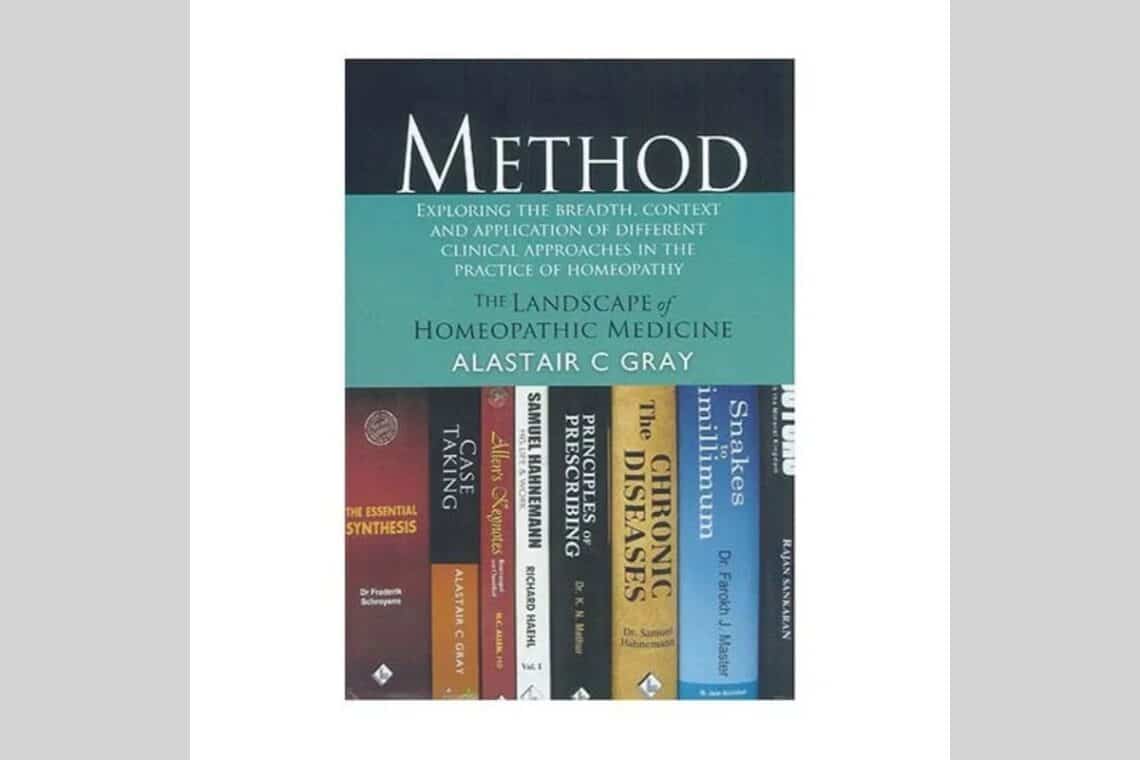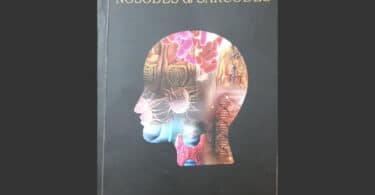‘Method’ by Alastair Gray
Reviewed by David Johnson
ISBN: 978-2-87491-0210
450pp – PB
US$ 44.00 | € 30.00 | £ 25.00 |
Publisher : B.Jain www.bjain.com
George Engel, the father of biopsychosocial medicine, once stated ‘How physicians approach patients and the problems they present is very much influenced by the conceptual models which organize their knowledge and experience. Commonly however physicians are largely unaware of the power such models exert on their thinking and behavior.’ Clearly this statement applies to homeopaths and homeopathic practice as well. Alastair Gray’s excellent “Method” greatly expands our awareness of the conceptual models by which we interact with clients, how we explore and comprehend “totality” in homeopathy, and in turn, how we match that totality with a remedy.
This user-friendly book explores the breath, context and application of different clinical approaches in the practice of homeopathy. “Method” is the second in a series of seven books intended to summarize the landscape of homeopathic medicine. Building upon Mathur’s “Principles of Prescribing”, Tyler’s “Different Ways of Finding the Remedy”, and Watson’s “A Guide to the Methodologies of Homeopathy”, one of Gray’s primary motivations for writing this book was to reconcile apparent inconsistencies within the profession. Through many examples he demonstrates how various approaches are a benefit to the profession. Rather than carrying a bias for or against certain methods, depending on the situation we may need to employ different strategies beyond our usual “modus operandi”.
Gray begins by describing Hahnemann’s and Boenninghausen’s practices in relation to the totality of characteristic symptoms of disease. Then he considers Kent’s significant influence on homeopathic practice through the emphasis on the totality of the characteristics of the person. This is followed by an in-depth exploration of the definitions of constitution and constitutional prescribing. All of this provides background for authors of other chapters to articulate the concepts of vital sensation, miasmatic prescribing, Scholten’s analysis and Eizayaga’s method. The final chapters by Gray outline the respective rationale, justification for, and limitations of keynote prescribing, isopathy, tautopathy, organopathy, and even polypharmacy.
Gray states: ‘There is no one right way to practice homeopathy that can be applied to every clinical situation . . .One dimensional homeopathic practice, even when practiced well or even brilliantly, will only be successful in a certain number of cases. Evidence suggests that a thriving practice and successful prescriptions require flexibility of method, and equal flexibility in good measure as a part of one’s psychological make-up. This flexibility allows homeopaths to know when to stop one line of thinking and treatment, and move to another strategy.’
There is so much information condensed into this single book, one can’t help but to learn something new each and every time it’s read. As with the first book “Case-Taking”, even the introduction and conclusion are enough to spark the reader into reflecting on one’s own practice and the profession as a whole. Method is a thorough and unbiased critique of all the better known methods in homeopathy, and Gray also reminds the reader how technical skills and methods, while essential, are not enough. He states ‘Our work should force us to look into ourselves, to question our own processes and to use homeopathy to help us in our own evolution. We cannot separate this personal evolution from that of our patients. We are implicated by our actions and our relationship with our patients and fellow practitioners . . . the future of homeopathy as a viable profession is dependent on how we conduct ourselves as practitioners . . . it is by our humanity that we will ultimately be measured’.
In summary, “Method” is a timely and well-researched journey through homeopathic approaches to “totality”, as well as what is required of us personally as homeopathic practitioners. I believe it will enrich the practice of each and every homeopath who reads it! Bravo, Alastair!





DEAR SIR,
IT IS STATED THAT IF ONE READS INTRODUCTION AND CONCLUSION OF THE BOOK,HE WOULD BE ABLE TO MAKE CORRECT ASSESSMENT REGARDING IMPORTANCE OF IT IN PRACTICE. SO IT IS BETTER FOR HIM TO GIVE EXTRACTS FROM INT. AND CON. OF THE BOOK
THANKS
SHEKHAR
It is said that one should not judge a book by its cover. I see that this book should not be judged by its title. The title “Method” offers no clue to the richness inside the book. Any book fostering flexibility instead of extreme dogmaticism is welcome.